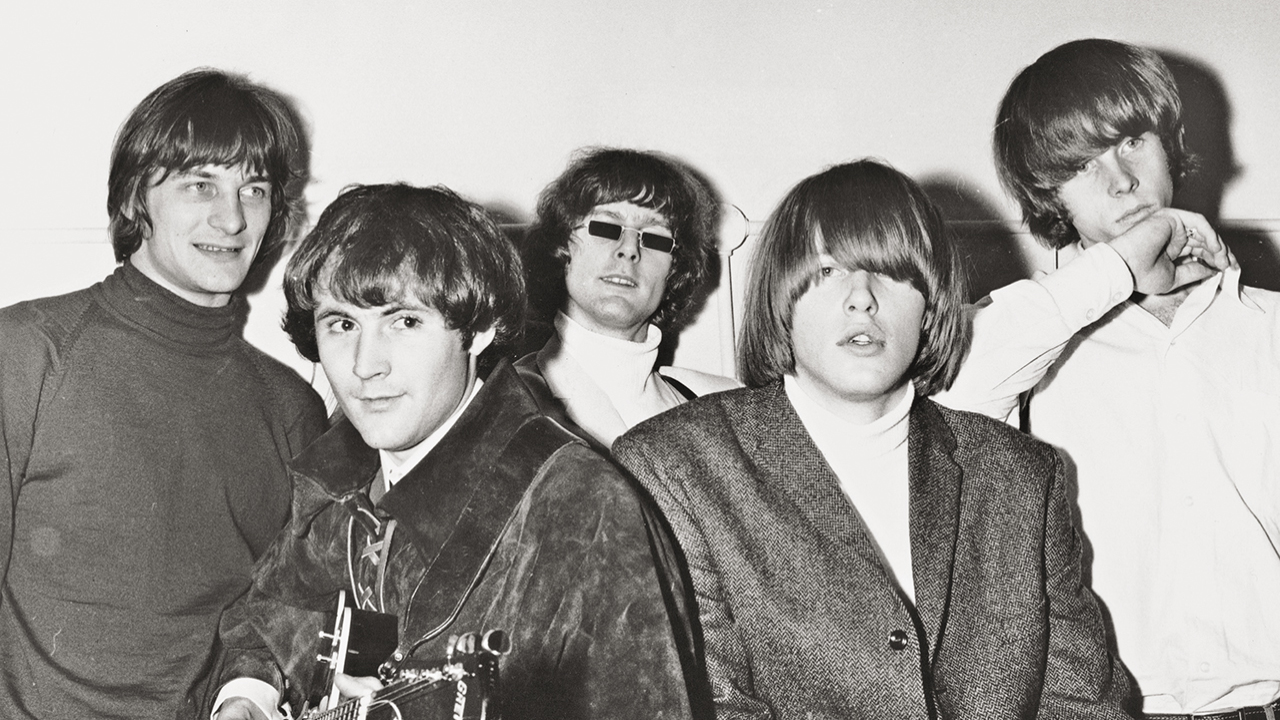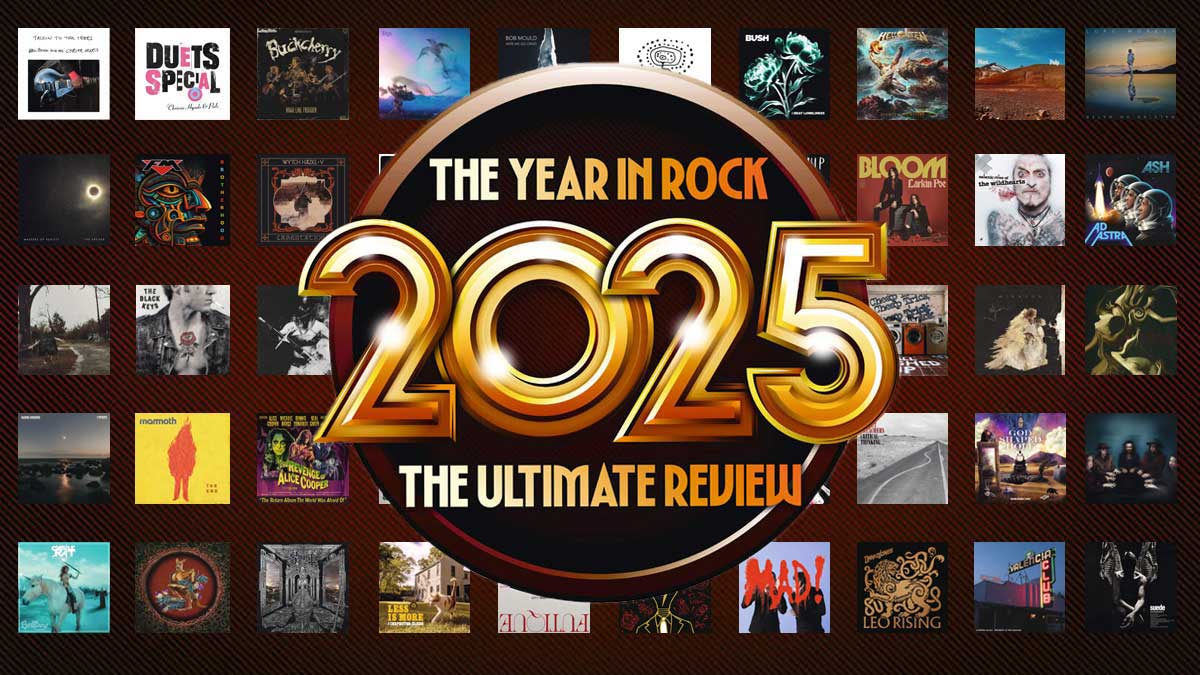66 from '66 – B-E
The 66 records that built rock as we know it – all from 1966.

Our 66 from ‘66, B-E.
The Byrds
Fifth Dimension
Columbia, July 18, 1966
The trippy mosaic logo on the front cover signalled the latest stop on The Byrds’ timeless flight. The former folk rockers were now harbingers of psychedelia. Gone were the Dylan covers; gone too was Gene Clark, although there was one final contribution from him, an audacious team-up with David Crosby and Roger McGuinn called Eight Miles High, whose guitar extrapolations drew on free jazz for a new tonal quality christened ‘raga rock’. If the lyrical subject matter – alien visitations (Mr Spaceman), Einstein’s theory of relativity (5D) – was quixotic, the music inside was a crazy patchwork.
The Count Five
Psychotic Reaction
Double Shot single, July 1966
A highlight of the 1972 compilation Nuggets, _Psychotic Reaction _(released in 1965 but reissued to greater acclaim in ’66) was inspired by a dull college tutorial about psychosis and neurosis. The San Jose quintet wrote a song that stuck a bomb under The Yardbirds’ British Invasion sound, underpinned by John ‘Mouse’ Michalski’s lurching fuzz guitar. That moment of academic tedium gave them a No.5 hit and introduced the double-time instrumental breakdown – borrowed from the Yardbirds’ I’m A Man – to American listeners. Adored by screaming teens for their bizarre Count Dracula stage attire, Count Five made an album of the same name then went back to college. Remember them this way.
Sign up below to get the latest from Classic Rock, plus exclusive special offers, direct to your inbox!
Cream
Fresh Cream
Reaction, December 9, 1966
I Feel Free
Reaction single, December 1966
With their debut album and second single (available on the US pressing of Fresh Cream), Cream’s pioneering sound pilfered from jazz as well as blues. Eric Clapton’s guitar heroics were a vital component, but it was drummer Ginger Baker and singing bassist Jack Bruce, both formerly of jazz/R&B troupe The Graham Bond Organization, who gave Fresh Cream its wonderfully skewed angles. Between them the three musicians twisted bluesmen Willie Dixon’s Spoonful and Skip James’s I’m So Glad into strange new shapes.
But it was on originals such as the UK Top 20 hit I Feel Free that Cream’s dizzying creativity came to the fore. Classically trained Bruce sang like a choirboy; North Londoner Baker’s Afro drumming suggested Nigeria-via-Neasden, and Clapton brought dazzling guitar licks from the heart of the Surrey delta. In theory it shouldn’t have worked. In practice Cream’s daring collision of blues, jazz and infant psychedelia couldn’t have
worked better.
The Creation
Making Time
Planet single, June 1966
After three years on the East End beat circuit, the Mark Four met future Charisma Records guru Tony Stratton-Smith who reshaped them as pop-art exponents The Creation. “Our music is red with purple flashes,” they declared, while playing aggro freakbeat to an accompaniment of living-canvas action paintings.
Overseen by The Who’s first producer Shel Talmy and released on his label, Planet, their debut single took the mundane – kicking against the pricks while working in a clock factory – and shredded it with Kenny Pickett’s sneering vocal and torrents of Who-style feedback. In the middle eight, guitar hero Eddie Phillips introduced an incendiary technique of playing with a violin bow that Jimmy Page would recycle with Zeppelin. A pulse-racing, anti-establishment banger from the band that inspired the name of Alan McGee’s notoriously hedonistic record label, and a sonic kick for future feather-cutted young bucks to jut jaws to.
Spencer Davis Group
Gimme Some Lovin’
Fontana, October 28, 1966
Stevie Winwood was just 17 when he knocked out this hepped-up variation on the theme of Homer Banks’s Ain’t That A Lot Of Love in a run of iconic blue-eyed soul belters for the Birmingham quartet. Its spontaneous, live feel – “We wrote it in an hour, then went to the pub for lunch,” elder brother/bassist Muff Winwood told Rolling Stone – plus that Hammond organ riff and uptempto thud will forever evoke the dancehalls of 1966.
Traffic, Blind Faith and mainstream 80s stardom beckoned for Stevie; Gimme Some Lovin’ remains the feelgood period track of choice for soundtrack compilers (The Blues Brothers, Good Morning Vietnam, Notting Hill) ad men (er, Activia Yoghurt) and the all-night runners of the continuing mod revival.
Donovan
Sunshine Superman
Epic, August 26, 1966
A classic early psych pop trip, this album was initially released in the US only. It contained a star-studded cast, including John Paul Jones and Jimmy Page who must have loved Don’s occult epic Season Of The Witch. Predating Revolver and Pet Sounds, the album offered insight into pop royalty. Legend Of A Girl Child Linda was about Brian Jones’s ex-girlfriend, and The Fat Angel was an homage to Mama Cass. It took Donovan to the top table and nipped in the bud the notion that he was a second-rate Dylan copyist. The Beatles were hugely impressed, partly because Donovan always had the best weed and was the first high-profile British pop star to be arrested for cannabis possession. Good day sunshine.
Bob Dylan
Blonde On Blonde
CBS, August 20, 1966
From the Salvation Army brass in Rainy Day Women #12 & 35 to the funereal end of Sad Eyed Lady Of The Lowlands, this album is where folk rock grew up, as Dylan replaced any lingering jangle with the immaculate virtuosity of his new Nashville session muso pals. There was playfulness to Leopard-Skin Pill-Box Hat balanced by Just Like A Woman, which managed to be dirty, misogynistic and deeply tender. The rulebook ripped up, the news was out: everybody must get stoned. The Beatles, whose Revolver came out a week earlier, felt compelled to up their game yet again with Penny Lane/Strawberry Fields Forever. This sense of one-upmanship was the single most vital driving force in all the great records made in 1966.
The Easybeats
Friday On My Mind
United Artists single, November 17, 1966
The Easybeats were definitive proof that the burgeoning rock movement was a global phenomenon. Inspired by The Beatles, the quintet were at the vanguard of a new wave of guitar-driven Oz pop. Friday On My Mind, an effusive hymn to hedonism marked by a nagging guitar motif, was their eighth single but the first to register on an international scale. Every Oz band since – from AC/DC and Radio Birdman to The Saints and The Birthday Party – owes it a debt. As further testament to its durability, in 2001 the Australasian Performing Rights Association voted it the best Australian song of all time.
